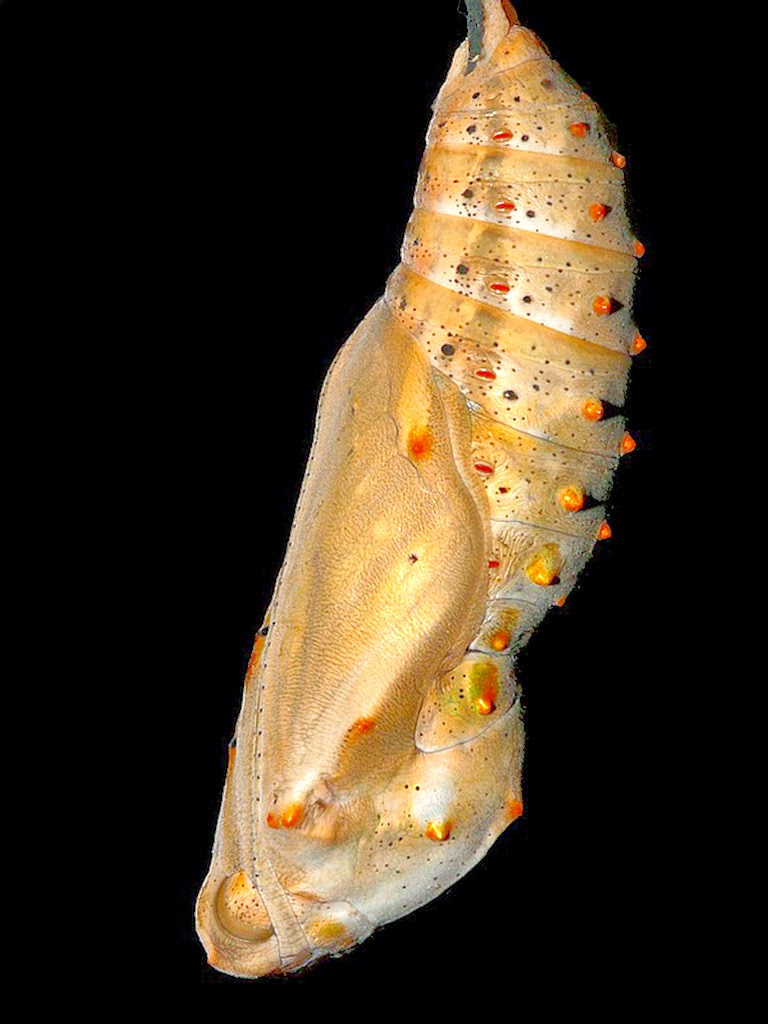"The least thing upset him on the links. He missed short putts because of the uproar of butterflies in the adjoining meadows."
-P.G. Wodehouse
Copied from Monarch Watch Blog:
Monarch Population Status: Addendum
Tuesday, September 2nd, 2014 at 4:45 pm by Chip TaylorFiled under Monarch Population Status | No Comments » As an addendum to our Monarch Population Status report posted on 29 July 2014, I offer the following:
Reports from throughout the breeding range indicate an increase in monarch numbers roughly along the lines projected in May. The migration is already underway having started at 50 N around the 12th of August. The leading edge should be in southern MN at this time and in Ames, IA around the 6th of Sept. Fall roosts have been reported to Journey North in the Dakotas, MN, WI, MI and NY as of 28 August. No roosts had been recorded by the 29th of August last year (see Monarch Roosts Fall 2013 and Monarch Roosts Fall 2014). There will surely be more monarchs to tag over the next two months and the overwintering population in Mexico is certain to be larger. At a minimum, I expect the population to be twice as large as last year or roughly 1.4 hectares but it could be twice that size. We still have to hear about monarchs from many areas and the conditions during the migration will likely determine how many of the migrants reach the overwintering sites. It will help to watch the reports of overnight clusters recorded by Journey North and to watch the weather conditions and note the availability of nectar sources as monarchs migrate through the United States and northern Mexico.
Painted Lady butterflies are a common sight in our gardens during the early spring to early summer, when they migrate north from desert areas in Baja California to where ever they land up in, up there somewhere.
Some of you may have seen and remember migratory, literal waves of these butterflies as they passed through on particularly bountiful years. Abundant and timely rains in the deserts create large host plant populations that consequently are able to support large volumes of Painted Lady caterpillar numbers. In domestic gardens, hollyhocks are a favorite host plant.
Vanessa cardui (Painted Lady) caterpillar butterfly rearing kits are extremely popular butterfly related items, especially in elementary classrooms, that can be purchased online at modest prices. These kits include a container with several live caterpillars, specially formulated Painted Lady caterpillar food, informational materials, and a net cage to house emerging butterflies. For those who have children or grand kids that are interested in nature, or would like to introduce them to one of natures miracles, these kits are complete, easy to put together, and easy to maintain. Just remember to release the butterflies from the net cage after they eclose (fancy-shmancy word for coming out of their chrysalides).
 |
Painted Lady Butterfly, Vanessa cardui
 |
Caterpillar
 |
Chrysalis
There are several species and sub species of Painted Ladies in North America. Here is an excellent link with photos describing the various species:
Painted Lady butterflies are the most widespread species of butterflies residing on our planet. They can be found in almost every corner of the globe save Antarctica!
No comments:
Post a Comment